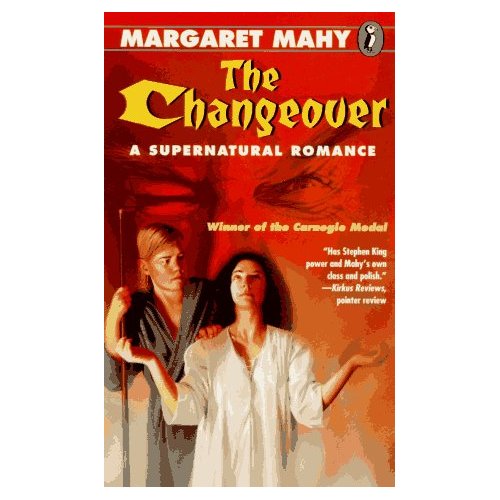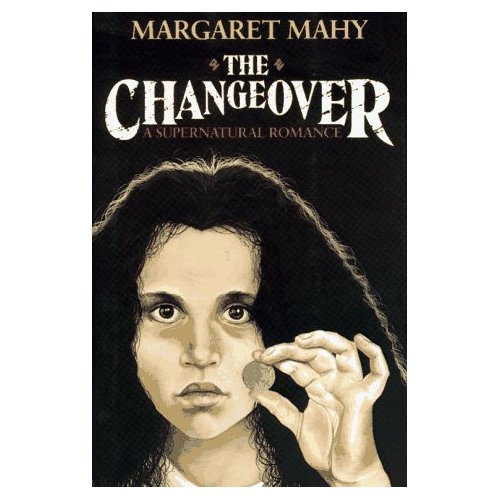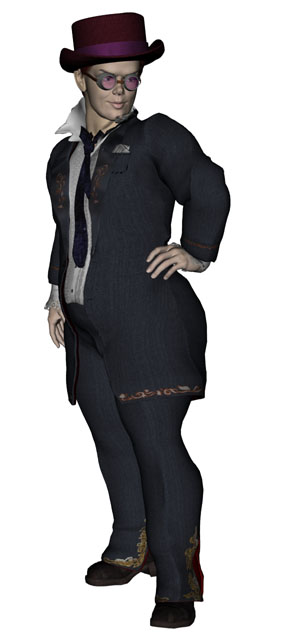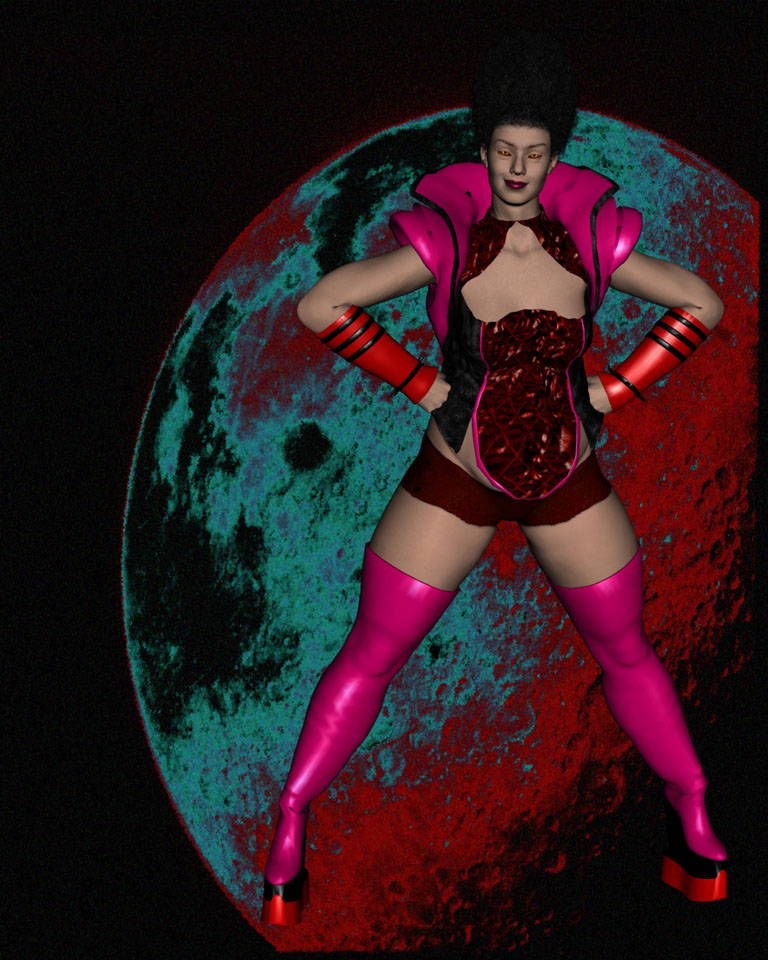While Twilight bogs itself down in the boring hiccups of its heroine’s obsessive mood, The Changeover establishes an entirely real world, replete with familial relationships, something that Twilight lacks. Laura of The Changeover, like Bella of Twilight, comes from a divorced family. Instead of providing mere plot points, however, Laura’s family — struggling bookseller mom Kate and cheerful 3-year-old Jacko — are an integral part of Laura’s life. Laura’s swiftly burgeoning relationship with jokey new suitor Chris mirrors Laura’s relationship with Sorry, the magical boy. Conflict also arises as Laura tries to accept her mom having a life again. Additionally, Jacko provides the catalyst for Laura’s temptation; prompted by her little brother’s magical possession, Laura seeks out Sorry to tutor her in witchcraft so that she may defeat the evil that is infiltrating Jacko. For all of Laura’s resentment toward Kate and Chris and all the magical machinations against Jacko, The Changeover at heart is a testament to the bonds of blood between Laura’s family and to a pure and convincing affection between siblings.
Speaking of familial relations, Sorry comes across as a real person, really scarred by his messed-up family life and his ambivalent relationship to the supernatural. Unlike Edward of Twilight, who seems serene and untouchable in his glittery vampirism, Sorry looks like an imposing witch, but he’s also a vulnerable boy. Abandoned by his mother to be abused by a foster family and then reclaimed, Sorry takes refuge in arch, snarky comments and his mastery of witchcraft. He can’t hide, however, his real attraction and affection for Laura, who seems to pierce his protective coating and recognize that his magical mastery doesn’t translate into social mastery. Also refreshing is the fact that he, 18, is seriously bothered by his deep connection to Laura, 15. During the teen years, such an age gap matters a lot in terms of maturity [and legality], and Sorry feels disturbed by the age disparity, unlike Edward of Twilight, who just thinks Bella’s a cute little kid, but remarks very little on a 100-year-old loving an 18-year-old. While Twilight tells the story of a stupid naif getting vacuumed up into a world of seemingly perfect magical beings, Mahy chooses to emphasize the essential humanity of everyone involved.

Cheesy, dated cover for paperback issue.
If you’ve been following my rants about Twilight, you’ll remember that Bella as a heroine frustrates me and disappoints me to no end with her passivity, clumsiness and fainting. Indeed, it is hard to write a story about a character caught up in events beyond his/her control without making the character seem solely like a reactive pawn. However, Laura from The Changeover illustrates how to make a sympathetic, active heroine in over her head. When we first see Laura bantering easily with her mother and watching protectively over her little brother, even as she tries to tell her mom about the supernatural warnings that she’s been hearing, we get an immediately endearing picture. Laura is obviously a bit too mature for the stereotypical teenage petulance; she’s devoted to both her mom and her brother in a touching way that shows the depth of her kindness and her compassion. She trades wry, flip comments with her mom that suggest both her appealingly blunt nature and a defense for having to grow up too fast. Her perceptive remarks about Sorry show Laura to be both magically intuitive and intelligent. She’s smart, capable, tough and insightful — all qualities that will serve her well throughout the story. She’s also lonely and a little heart-damaged. What else could she ask for except another tough, smart, defensive, heart-damaged person to understand her and fill the hole of love in her psyche? Good thing Sorry’s around.
Though billed on the cover as "a supernatural romance," The Changeover can more accurately be described as "a supernatural and romantic story about love." For all their faults, both Laura’s and Sorry’s families love Laura and Sorry; the members in each family love each other, and Laura and Sorry love each other too. Parental love, filial love, sibling love, the love of courting adults and the love of courting teens all appear in The Changeover. Because Mahy has sympathy for everyone [even the evil possessive spirit, a lonely psychic vampire who craves the sensuality of human experience], we see through her warm authorial eyes the lovable qualities in each character. Therefore we understand why characters are so attached to each other and how love can be the magic that overcomes all desperation and truly links people together. Unlike Stephenie Meyer, who just writes about some abstract, unconvincing Super-Dramatic Obsessive Love and then tacks some characters on to it, Mahy uses her characters to drive the story.
But yes, because Mahy loves a good love story, The Changeover does have a classic romance woven into it. Laura and Sorry are destined for each other, but they don’t want to accept their relationship’s inevitability. However, of course, circumstances force them to admit that they belong together. Gratifyingly enough, however, Mahy tempers the romantic trends with realism. Instead of falling into Sorry’s arms the way that Bella in Twilight keeps tripping into Edward’s grasp, Laura depends on him for help and guidance in saving Jacko, but she does serious work in her own head first. Sorry does not take over Laura’s story and become the soppy center of her universe; instead, the two of them form a partnership of equals. In another perspective, they each expand their definition of family to allow the other into their circle. In fact, Sorry remarks early on that he feels like his friendship with Laura contains "all the disadvantages of marriage" and none of the advantages. They grow into the advantages.

A haunting cover for the hardback version.
Laura and Sorry together make me incredibly happy because they are both strong, accomplished people who match each other well in terms of maturity, power and familial devotion. They do not compromise themselves in their love, the way that Bella and Edward do in Twilight [with Bella becoming even more of a whiny doofus and Edward refraining from chewing Bella’s whiny head off]. Laura and Sorry complement each other, bringing out strengths in each other. For a 14-year-old and an 18-year-old, they eventually have a remarkably mature [but also thoroughly believable] relationship. They postpone further intimacy at the end when Sorry goes off to park ranger training and Laura goes off to finish high school. While Mahy does not give in to readers’ desires to see the deserving couple remain together RIGHT NOW, this ending really ends up being more satisfying. Hey, if Laura and Sorry are this good together when they are so young, imagine how much better they will be in a few years!
Labyrinth should have been this good. Twilight should have been this good. But they aren’t, so read the one, the only, the best, the nuanced by generally awesome and accomplished Kiwi author Margaret Mahy.
Up next: City of Bones by Cassandra Clare, primarily to mock it.





